#reclamation nature
Text
youtube
[ 예송미술관 ]
LEEJAEHYUN _ Interview
0 notes
Text


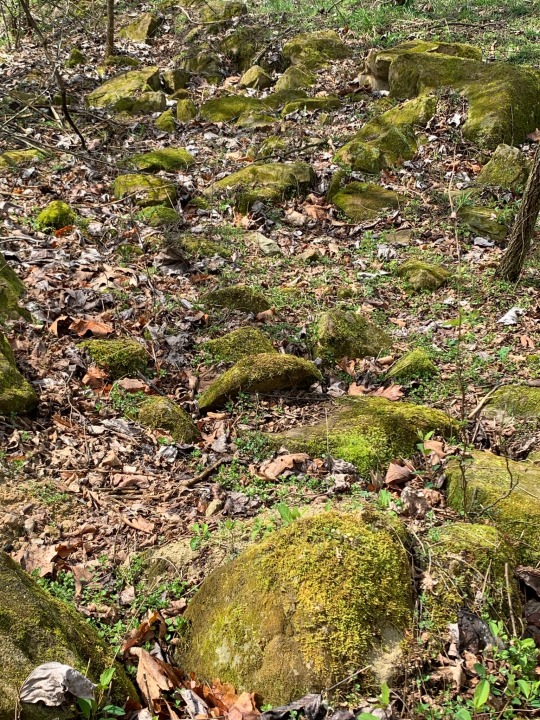

abandoned strip mine 18 years after volunteers planted trees into the ground of mostly broken rock and partly scant clayey soil
So cool to see how the forbidding boulders and stones become lush with moss and lichens and the ferns and small plants return
357 notes
·
View notes
Text



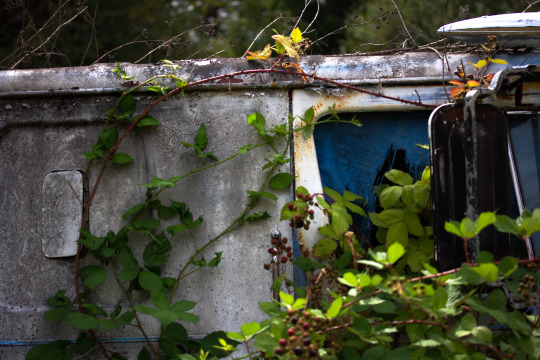




I've driven past this field full of abandoned vehicles a few times a year for about 15 years. I always wanted to stop and take photos, but I was warned that the man who lives there was not friendly. Well, since time makes fools of us all, the gun-toting landowner is now no longer a problem.
#photography#nature#reclamation of nature#abandoned#abandoned trucks#entropy#decay#brambles#rural#farm#rural decay#urbex#rurex
158 notes
·
View notes
Text
I keep seeing posts about people being scared of Vault 22 and I'm kinda confused

This fucking thang is so gender to me
#i think the spore carriers are beautiful#i think the idea of all consuming plants is beautiful#idk man#its like... sure the death of the vault dwellers ks horrifying#but they became a force of nature like nothing else#an act of reclamation after nuclear devistion#a promise that nature will not vield or be controlled#im drunk so dont take what I'm saying so serious
6 notes
·
View notes
Text
Where do i apply to be engulfed by moss?
20 notes
·
View notes
Note
“coochies” do you want to repulse people who would otherwise reblog? like i am trans and have one but im not reblogging a word that’s been used by gross str8 cis men to talk shit about my body. why would you talk about us this way. 🤮
coochie is a funny word lol
#inbox#my friends and i use it CONSTNATLY so that’s probably why i used it in the post lol#it’s such a silly word#silly and goofy#don’t you take joy in reclamation? take a walk outside and look at the beauty of nature#anon
34 notes
·
View notes
Photo

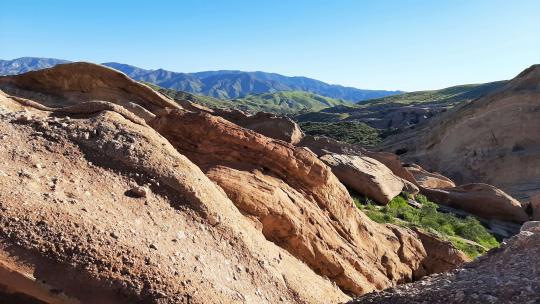
i actually went hiking yesterday btw
#(i am not a nature or exercise person)#also this is where they filmed kirk fighting the gorn. which is the main reason why me and my friend went here specifically lmao#we also went to the tillman water reclamation plant (starfleet headquarters) a few weeks ago but it just happened to be closed on that day
29 notes
·
View notes
Photo

Natural Reclamation
Artist: Alayna Danner
TCG Player Link
Scryfall Link
EDHREC Link
21 notes
·
View notes
Text
#At Refrigerant Center INC#we specialize in providing comprehensive refrigerant solutions tailored to meet the diverse needs of our clients. With a deep understanding#Ventilation#and Air Conditioning) industry and its evolving regulatory landscape#we are committed to offering environmentally responsible refrigerant products and services.#Our company prides itself on being a trusted partner for businesses operating in various sectors#including commercial#industrial#and residential. Whether you're a facility manager#HVAC contractor#or equipment manufacturer#we have the expertise and resources to fulfill your refrigerant requirements efficiently and affordably.#Key Services and Products:#Refrigerant Sales: We offer a wide range of refrigerant products#including traditional HFCs (Hydrofluorocarbons)#low-GWP (Global Warming Potential) alternatives like HFOs (Hydrofluoroolefins)#and natural refrigerants such as CO2 and ammonia. Our extensive inventory ensures that clients can find the right refrigerant for their spe#Refrigerant Reclamation: Recognizing the importance of sustainability#we provide refrigerant reclamation services aimed at recovering#purifying#and reprocessing used refrigerants. Through our state-of-the-art reclamation facilities#we help clients minimize environmental impact while maximizing cost savings.#Regulatory Compliance Assistance: Navigating the complex regulatory landscape surrounding refrigerants can be challenging. Our team stays u#national#and international regulations#including EPA (Environmental Protection Agency) regulations in the United States.#Technical Support: We understand that proper handling and usage of refrigerants are critical for the safety and efficiency of HVAC systems.#training#and educational resources to assist clients in handling refrigerants safely and effectively.#Customized Solutions: Every client has unique requirements
3 notes
·
View notes
Text
Imagine one day your book gets adapted into a movie or whatever but it has a soundtrack that goes as hard as Lord of the Rings. I would cry and I would die happy
#not me getting the nature reclamation theme stuck in my head and being filled with a deep longing in my soul#you could make that soundtrack your new writing playlist#lord PLEASE one day
3 notes
·
View notes
Text
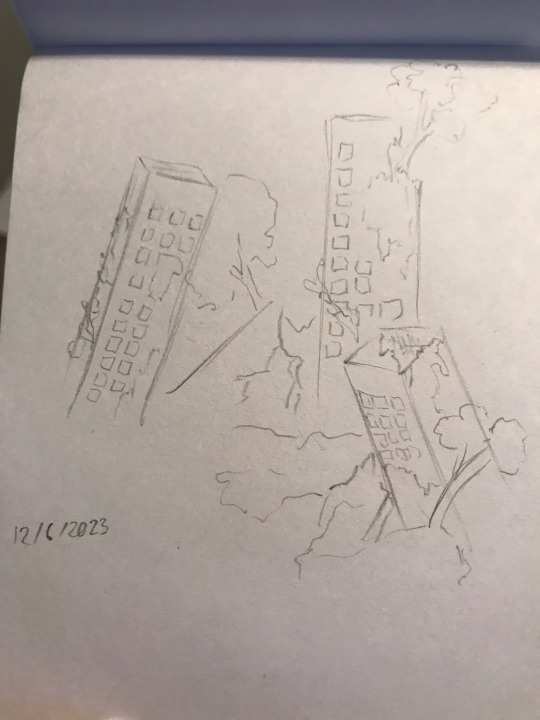
2 notes
·
View notes
Text

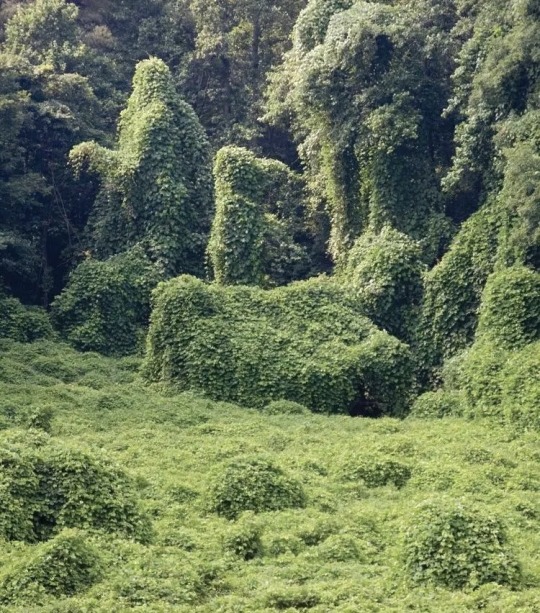

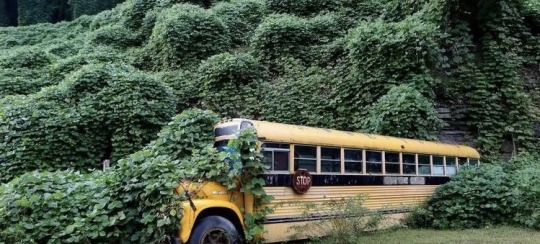



This shit is everywhere down here, you can’t kill it so it just keeps growing and growing. 2 things are going to survive at the end of the world cockroaches and kudzu
12 notes
·
View notes
Text

New Life
#photography#reclamation of nature#rural#rural decay#trucks#entropy#decay#farm life#farm#old trucks#abandoned#abandoned truck
47 notes
·
View notes
Text
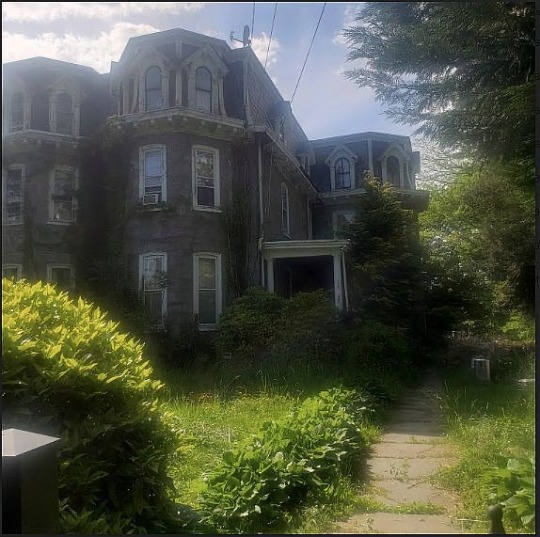
#unreal places#unreal#alternate universe#blurry#fuzzy#liminal#architecture#natural reclamation#places#midwest gothic#midwest
3 notes
·
View notes
Text

2018
#photography#minneapolis#mpls#mplsart#plants#outdoors#reclamation#nature#vines#autumn#red#orange#yellow#overgrowth#urban reclamation
2 notes
·
View notes
Text
Some Thoughts on Ancestral Inheritance
I have long felt that one of the many signs of our collective cultural illness (and cultural orphanhood) in the contemporary West—particularly in North America—is that most of us have no sense of where we really come from. I don’t mean where we were born, of course, but what specific people-groups and landscapes we’re descended from. Generally speaking, Americans invest little to no interest in this sort of inquiry, and, in my view, are greatly diminished thereby.
I once heard the half-Scottish, half-Cherokee author and psychiatrist, Lewis Mehl-Madrona, refer to a way of introducing oneself to others that incorporates some detail about where one actually comes from as an ‘indigenous introduction’: a way that folks from most indigenous cultures around the world might be likely to introduce themselves, especially in a formal context—that is, by naming the people and communities they are descended from, and, with equal weight of importance, the Land(s) that their people hail from, where the bones of their ancient ancestors are buried and have merged with the soil for countless generations. This kind of ancestral memory was so important to my own Gaelic ancestors that in ancient times folks would frequently recite entire lineages of ancestry at public feasts and other important gatherings, often connecting individuals with certain divinized ancestors—sometimes human, sometimes not. This was seen as a way to express a healthful pride in one’s ancestry, and also in some cases to make a claim for why one should be listened to or accorded a place of trust, honor, or authority in the assembly.
In many indigenous cultures, the question of ‘authority’ is a crucial one. What, for instance, gives one authority to claim a certain title, or to pursue a vocational role that would significantly affect the lives of other people in the tribe, or of the communitas at large (i.e., of the human and other-than-human communities in a specific place)? Naturally, each culture answers this question differently, but as one example of how this kind of thing might be approached: in Diné culture, possessing some soil or stones (and/or other natural objects) from a certain sacred place in the landscape grants one the authority to speak with the spirits and ancestors in prayer: a crucial thing for all, without which life cannot proceed harmoniously. Likewise, in Diné, Hopi, and other Southwestern indigenous cultures it is considered a duty to be able to introduce oneself by naming the four clans one is most directly descended from (traced from the grandparents on both the maternal and paternal sides). Traditionally, whenever one introduces oneself to a new person or group of people, one offers the names of these four clans from which one has descended, so that the person or group right away knows something deeper about the one they’re relating with.
In any animistic worldview, knowing where on the Land one’s people are from is crucial, too, because it says something meaningful about the inheritance that person is carrying—not just from genetic and epigenetic memory, via the human (and possibly non-human) ancestors, but also from the living Land herself.
All this relates to the indispensable practice in more or less all animistic cultures of honoring the ancestors. In some cultures, ‘ancestors’ is a fairly broad category, but at very least it includes the human beings in our direct lineages of descent, all those because of whom we are who we are, here and now, in the present form in which we find ourselves.
It goes without saying that almost no one in our contemporary North American social environment asks about these kinds of things, and no one speaks this way when meeting others (in fact, to many people it would probably seem rude or outlandish to do so). In part this no doubt relates to the fact that very few of us are indigenous to this Land, and indigenous American cultures are tragically now a minority within the greater population. Most of us, in other words, are not descended from this Land, and nor were our ancestors—human or otherwise. Whether European, African, Asian, or anything else, our origins lie in another landscape, and many of us are unfortunately not in touch with that fact at all, or with the Land(s) we are actually descended from. (This certainly doesn’t mean that we can’t also feel profoundly connected to the American landscape; I certainly do—at least to certain parts of it. And it doesn’t mean that we shouldn’t also honor the Land we’re actually standing on, and engage with her and all her inhabitants relationally, wherever we happen to be. We should absolutely and unequivocally do so!)
I have sometimes introduced myself in a (broadly) indigenous way to students, for example at the beginning of a workshop or class that I’m teaching, but I almost never have the occasion to do so in general life when meeting new folks (unless those folks happen to be indigenous Americans), simply because it would seem bizarre and totally out of place in the minds of most Westerners for me to introduce myself in that manner. This is unfortunate, but it’s the plain reality. Notwithstanding, I’ve been thinking recently that perhaps I should attempt to do this kind of introduction a bit more frequently, and encourage others to do the necessary research and reflection that would allow them to do likewise, should they wish to.
In this spirit, I have decided to begin using the traditional spelling of my name more often, i.e., as it is rendered in my ancestral language of Gàidhlig (Scottish Gaelic). I will not do this everywhere (for instance in my published writing, only because at this point it would likely be unnecessarily confusing to people in that context), but I am beginning to do it in a host of other places where it seems to make sense, including here on the ‘inter-webs’.
So, this is how I would formally introduce myself in Gàidhlig—anns an Ghàidhlig (agus A’Chuimris):
An t-Athair Curramach Brèanainn Èilis Mac Uilleim, à Naomh Anna
Oighreachd shinnsireil: Mac Greumach à Lothian, Alba; Mac Glasain à Inbhir Nis, Alba; Ò Beòllàin à Slideach agus an Clàir, Connacht, Èirinn; Mac Uilleim à Monmouth, A’ Chuimrigh
Agus anns an t-A’Chuimris (and in Welsh): Y Parchedig Tad Brenhin Elisedd Ap Gwilym
This honors the clannan (‘clans’) from which I am directly descended, both matrilineally and patrilineally, in their original spellings in Gàidhlig, and names the ancestral Lands of each clann. It also gives my full name and religious title in Gàidhlig, and states where I was born (Naomh Anna: St. Anne). Oighreachd shinnsireil means literally, ‘ancestral inheritance’, or, ‘what is received from the ancestors’, and can refer to material inheritance, but also to lineages of descent. I like this double-valence of meaning because what we principally receive or ‘inherit’ from our ancestors is our particular shape of life in a given incarnation, derived to a meaningful degree from their epigenetic memories, their genetic tendencies, and a spiritual connection to the sacred Lands from which they hail. We also, of course, receive their names and stories. All this, it seems to me, is our true inheritance.
I can’t help but think that a completely different mindset and culture than what is normative today throughout the West would result from being taught (or learning) to think of oneself firstly in relation to who and where one comes from, rather than first and foremost imagining oneself as an isolated agent somehow moving through the world apart from all those threads of what I sometimes call the breacan a bhith (‘tartan/weaving of life/being’), which actually constitute a large portion of who we are in this lifetime.
I would say that to understand and honor this reality of interbeing reflects a broadly indigenous (and certainly an animistic) worldview: an interpretive lens of relationality, interdependence, and holism, rather than isolationism and consumption. And we could reasonably say that this relational way of thinking and being reflects an inherently anti-colonial worldview, because by its very nature it resists the reductionism, materialism, selfishness and egoic isolationism that modern Western thought and social practice have enforced on so many cultures the world over, not only to the destruction of the latter, but to the everlasting shame and interior erosion of the former.
If one wished to take this worldview a step further, one could begin to incorporate the notion that plants and animals and all living beings on this Earth are also in some meaningful sense our ancestors and our spiritual siblings. It is possible to engage deeply with these concepts and begin to integrate them, both ideationally and practically. (This is something I have explored at some length elsewhere, e.g., in my book, Seeds from the Wild Verge.)
A deeper and more life-giving way of seeing can indeed be learned, even if we were never taught to think in such a way when we were children. It is never too late to revisit the underlying, foundational assumptions in our minds and redress them in a way that might yield a more fruitful mode of thinking and moving in the world. Perhaps a mode in which our starting point for conceptualizing our lives and the world around us begins not with us as individuals, but with a collective, a commonage, a family of being from which our own lives have arisen and to which, by duty of honor, we owe an immense debt of gratitude.
It takes time and effort to do this work, but one can absolutely transmute their way of thinking about self and other, relationship to the Land and the ancestors and all other living things, into a vision that is holistic, realistic, and generative. It is my feeling and experience that, if one is truly open and desirous of this transmutation, no amount of corrosive, capitalistic, dominator ideology and past conditioning can prevent its unfoldment. That much, at least, I feel confident in definitively stating. And I think this is so because it is actually natural for us to relate to the world in a holistic and relational way; what is unnatural is the corrosive conditioning placed around our necks by the materialistic, self-focused, reductionistic, alienating dominator ideologies that have so thoroughly shaped our thoughts and actions for so long in the Western world.
And the process of liberating ourselves from all this can begin with some very simple things like learning to make an ‘indigenous introduction’, as described above, or going out into the natural world around where one lives—preferably alone and undistracted—to spend some time really getting to know the plant and animal species one shares that part of the world with, experiencing and reflecting on their different qualities and gifts of beauty, and on the ways in which they contribute to one’s own life and well-being, even though one ordinarily wouldn’t be aware of it.
These kinds of simple practices, if done with sincerity and intentionality, can be the beginning steps on a journey toward greater wholeness and the reclamation of our own ancestral inheritance—and, at some level, as Irish poet Seán Ó Ríordáin once put it, of ‘[our] own mind and [our] own true shape.’
Mòran beannachdan air an t-slighe (‘Many blessings on the way’),
An t-Athair Brèanainn
#brendanelliswilliams#spirituality#priest#reclamation#spiritualjourney#reflection#nature#ancestry#ancestral#ancestralwisdom#ancestors#gaelic#celtic#indigenous#inheritance#animism#religion#culture#scholar#poet#seer#theologian#colonialism#ecology#landscape#interbeing#wisdom#depth#transformation
0 notes